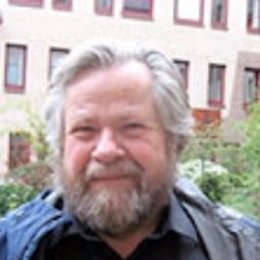PROGRAMME: Geomorphology (1977)
Why Geomorphology
“The fact is that I always wanted to work with geo-information. During my secondary school years in Canada, I was already doing research around the North Pole in northern Canada during my summer holidays. I studied the effect of ice on the coastal environment.” It was during his secondary school years that Olaf Niemann, who is Canadian, was told by a fellow schoolmate that she had studied at the ITC. She had studied Geomorphology. He knew immediately: “That's what I want to do”.
My EXperience at ITC
In 1976 Niemann came to the Netherlands to study at the ITC, or to give its full name, the Faculty of Geo-Information Science and Earth Observation. “At that time Enschede was fairly poor. There was not as much to do then as there is nowadays. We could usually be found in the students' hotel or at the ITC. Nevertheless, I had a wonderful time. We had a fabulous time just being together. The ITC is a unique location, a really stimulating community. There is a strong feeling of connectedness. Everyone comes there for the same reason: to learn about geo-information and earth observation. During my student years at the ITC I learned a lot about various types of people, because it is a place where so many cultures come together. The collaboration with fellow students from all sorts of different backgrounds made me more open-minded: since that time I have a more open attitude towards different ideas and convictions. I am happy to have such a perspective. ITC is acknowledged throughout the world for its achievements in education, research and capacity development in the field of geo-information sciences and earth observation. It is strange that the ITC is so famous throughout the world, and yet apparently not everyone in the Netherlands is aware of what goes on here.”
Current Work
Today, 38 years later, Niemann has returned to the ITC. Based on his position as professor of Geography with the University of Victoria in Canada, he had spend a month in Enschede talking to researchers and students. “It is wonderful to be back here and to talk to lots of different people who are doing research that has so much in common with my own research. I am here at the invitation of Prof. Andrew Skidmore, head of the department of Natural Resources. His research has a great deal in common with my research. We are both involved in research into vegetation and its preservation, with the aid of earth observation techniques such as the use of satellite information. An example of this is that both his department and mine are looking into mapping out forest structures with the help of laser techniques and light reflection.” In addition to doing research, Olaf Niemann also loves to teach. “The best part about teaching is that students are so enthusiastic about what they do. They are still open-minded and eager to learn. It is wonderful if you can hold on to that for as long as possible.”


